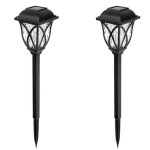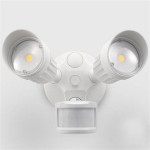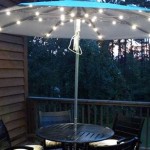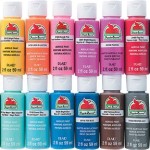Best Way to Clean Outdoor Hanging Lights
Outdoor hanging lights add ambiance and functionality to patios, porches, and gardens. However, exposure to the elements inevitably leads to the accumulation of dirt, dust, cobwebs, and mildew, diminishing their aesthetic appeal and potentially affecting their performance. Regular cleaning is crucial to maintain the brightness and longevity of these fixtures. Choosing the best cleaning method depends on the type of lights, the extent of the grime, and accessibility to the fixtures.
Before undertaking any cleaning process, safety should be the primary concern. Always disconnect the power supply to the lights before commencing cleaning. This can involve switching off the relevant circuit breaker or unplugging the lights from the outlet. Never work with electricity near water. If the lights are hardwired, verifying complete power disconnection is paramount. Use a stable ladder or step stool to reach the lights, ensuring it is firmly positioned on a level surface. Wear appropriate safety gear, such as gloves, to protect hands from cleaning solutions and debris. Eye protection is advisable, especially when dealing with overhead fixtures.
Identifying the type of outdoor hanging lights is the first step toward choosing the appropriate cleaning method. Several variations exist, each requiring specific considerations:
- String Lights (Edison Bulbs, Globe Lights): These typically feature multiple bulbs connected by a wire. The bulbs may be glass or plastic, and the sockets are often exposed to the elements.
- Lanterns: These enclosed fixtures come in various styles, from traditional to modern, and are usually made of metal, glass, or plastic.
- Pendant Lights: Similar to indoor pendants, these lights hang from a single chain or rod and are often made of glass, metal, or durable plastic.
- Solar Lights: These lights are powered by solar panels and require careful handling to avoid damaging the panels.
The material of the light fixture also dictates the cleaning approach. Glass requires a gentle approach to avoid scratching or shattering. Metal fixtures may be prone to rust or corrosion, necessitating specific cleaning agents. Plastic is generally durable but can become discolored over time. Understanding the composition of the light fixture ensures that the cleaning process does not cause damage.
Gentle Cleaning with Soap and Water
The mildest and often most effective method for cleaning outdoor hanging lights involves using a solution of mild dish soap and warm water. This approach is suitable for most types of lights and materials, including glass, plastic, and metal. Begin by preparing the cleaning solution. Add a few drops of dish soap to a bucket of warm water and mix thoroughly. Avoid using excessive soap, as it can leave a residue that attracts dirt. A soft cloth or sponge is ideal for applying the solution. Microfiber cloths are particularly effective for removing dirt without scratching surfaces.
For string lights, gently wipe each bulb with the soapy water solution, paying attention to remove any accumulated dirt or cobwebs. Avoid submerging the sockets in water. For lanterns and pendant lights, carefully wipe the exterior surfaces with the damp cloth. If the fixture has glass panels, use a separate clean, damp cloth to wipe away any soap residue. Dry the lights thoroughly with a clean, dry cloth. This prevents water spots and helps to maintain the fixture's shine. For intricate designs or hard-to-reach areas, a soft-bristled brush, such as a toothbrush, can be used to gently scrub away stubborn dirt.
For solar lights, avoid getting water on the solar panels. Instead, use a slightly damp cloth to wipe the panels clean. Regularly cleaning the solar panels ensures optimal sunlight absorption and improves the light's performance. For heavily soiled fixtures, the cleaning process may need to be repeated. Allow sufficient drying time before restoring the power supply to the lights. If any water has entered the sockets, allow them to dry completely before reinserting the bulbs.
Addressing Stubborn Grime and Mildew
In situations where the dirt and grime are particularly stubborn, or if mildew is present, a slightly stronger cleaning solution may be necessary. A mixture of white vinegar and water can be effective for removing mildew and hard water stains. Combine equal parts of white vinegar and water in a spray bottle. Spray the solution onto the affected areas and allow it to sit for a few minutes. Then, use a soft cloth or sponge to wipe away the grime.
For metal fixtures that exhibit signs of rust, a specialized rust remover may be required. Follow the manufacturer's instructions carefully and test the product on an inconspicuous area first to ensure it does not damage the finish. Apply the rust remover according to the instructions, and then wipe away the residue with a clean cloth. A metal polish can be used to restore the shine to metal fixtures after cleaning.
For plastic fixtures that have become discolored, a solution of baking soda and water can sometimes help to brighten the surface. Make a paste of baking soda and water, and apply it to the discolored areas. Allow the paste to sit for a few minutes, and then gently scrub with a soft cloth or sponge. Rinse thoroughly with clean water and dry with a clean cloth. This method can also be effective for removing stains from plastic fixtures.
When dealing with stubborn grime or mildew, avoid using abrasive cleaners or scouring pads, as these can scratch or damage the surface of the light fixtures. Always test any new cleaning solution on a small, inconspicuous area first to ensure it does not cause discoloration or damage. Proper ventilation is essential when using stronger cleaning solutions. Work in a well-ventilated area to avoid inhaling fumes.
For fixtures with intricate designs or hard-to-reach areas, consider using a pressure washer with a low-pressure nozzle. This can be an effective way to remove dirt and grime from crevices. However, exercise caution and avoid directing the water stream directly at electrical components. Ensure the fixtures are completely dry before restoring the power supply.
Preventative Measures and Regular Maintenance
Preventing the build-up of dirt and grime is essential for maintaining the appearance and performance of outdoor hanging lights. Regular maintenance can significantly reduce the need for intensive cleaning. Consider these preventative measures:
- Regular Dusting: Dusting the lights regularly with a soft cloth or brush helps to prevent the accumulation of dirt and cobwebs. A vacuum cleaner with a brush attachment can also be used to remove dust from hard-to-reach areas.
- Protective Coatings: Applying a protective coating to metal fixtures can help to prevent rust and corrosion. Several products are available that are specifically designed for outdoor metal surfaces.
- Proper Placement: Consider the placement of the lights to minimize exposure to the elements. Avoid placing lights directly under trees, where they may be exposed to falling leaves and bird droppings.
- Seasonal Cleaning: Perform a thorough cleaning of the lights at least twice a year, preferably in the spring and fall. This helps to remove accumulated dirt and grime before it becomes too difficult to remove.
- Bulb Maintenance: Regularly inspect the bulbs and replace them as needed. Ensure that the bulbs are properly sealed to prevent water from entering the sockets.
For string lights, consider storing them indoors during the off-season to protect them from the elements. This can significantly extend their lifespan and reduce the need for frequent cleaning. When storing the lights, coil them neatly and store them in a dry place. For lanterns and pendant lights, consider using covers to protect them from the elements when they are not in use.
By implementing these preventative measures and establishing a regular cleaning routine, outdoor hanging lights can maintain their beauty and functionality for years to come. Careful attention to the type of light, the materials it is made from, and the cleaning products used will ensure that the cleaning process is effective and does not cause damage. Regular maintenance not only enhances the aesthetic appeal of outdoor spaces but also contributes to the safety and longevity of the lighting fixtures.
In summary, effectively cleaning outdoor hanging lights involves a multi-faceted approach. Understanding the lights' composition, employing safe practices, selecting appropriate cleaning agents, and implementing preventative measures are all crucial steps. These steps ensure the lights illuminate spaces effectively, maintaining both their functionality and aesthetic charm for an extended duration.

How To Hang Outdoor String Lights And Make Them Look Good Wirecutter

How To Hang Outdoor String Lights And Make Them Look Good Wirecutter

The Best Way To Clean Mold Off Your Outdoor String Lights

5 Easy Tips For Hanging Outdoor String Lights From A Pergola

How To Hang String Lights Outdoors

How To Hang String Lights Outdoors

Cleaning Light Fixtures Do S Don Ts For Clean Lights

28 Backyard Lighting Ideas How To Hang Outdoor String Lights

How To Hang Outdoor String Lights And Make Them Look Good Wirecutter

How To Hang String Lights Outdoors
Related Posts







